Moniek Bloks's Blog, page 129
December 17, 2021
Book News January 2022
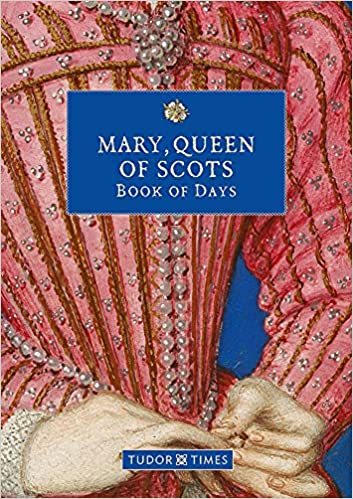
Mary, Queen of Scots Book of Days
Hardcover – 9 September 2021 (UK) & 1 January 2022 (US)
Hugely informative and stunningly produced, the Mary, Queen of Scots Book of Days pairs a practical perpetual diary with a wealth of material on the life and times of Mary, Queen of Scots (1542 -1587). The first woman to be crowned as a queen regnant in the British Isles, her tumultuous life and tragic end has fascinated people for centuries.
Each of the 365 days of the calendar year has the date, but not the day, of the month, allowing the owner to record events and reminders over many years.
The linen-effect cover reproduces a detail from François Clouet’s Portrait of Mary, Queen of Scots (circa 1558), courtesy of the Royal Collection Trust, with the interior printed on Munken Pure paper, perfect for writing, and completed with a ribbon bookmark.
The high-quality production and luxurious feel make this an ideal gift item for anyone with an interest in the\nTudor and Stewart history.
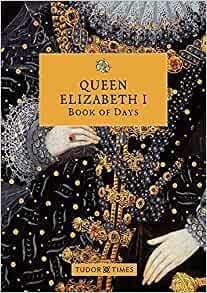
Queen Elizabeth I Book of Days
Hardcover – 7 September 2021 (UK) & 1 January 2022 (US)
Hugely informative and stunningly produced, the Elizabeth I Book of Days pairs a practical perpetual diary with a wealth of material on the life and times of the last Tudor queen, Elizabeth I (1533-1603), one of England’s most iconic and celebrated monarchs.
Each of the 365 days of the calendar year has the date, but not the day, of the month, allowing the owner to record events and reminders over many years.
The linen-effect cover reproduces a detail from William Segar’s Ermine Portrait of the queen (1585), courtesy of Hatfield House, with the interior printed on Munken Pure paper, perfect for writing, and completed with a ribbon bookmark. The high-quality production and luxurious feel make this an ideal gift item for anyone with an interest in the Tudor period.
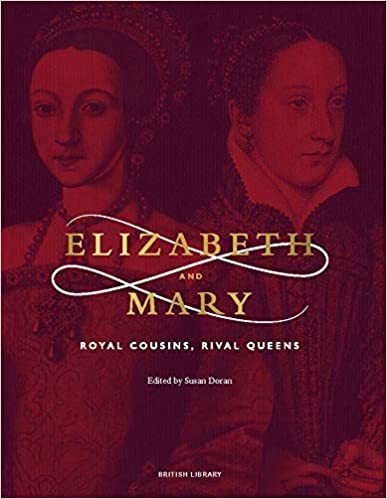
Elizabeth I and Mary, Queen of Scots: Royal Cousins, Rival Queens (The British Library Exhibition Book)
Hardcover – 8 October 2021 (UK) & 1 January 2022 (US)
This book seeks to refresh and retell the story of Queen Elizabeth I and Mary, Queen of Scots through their own words. Accompanying a major British Library exhibition, Elizabeth and Mary: Royal Cousins, Rival Queens brings new insights to the familiar tale of two powerful women whose relationship dominated English and Scottish politics for thirty years. Their personal history and struggle for dynastic pre-eminence are described and explained against the backdrop of religious conflict, rebellion, fear of foreign invasion, espionage and treason.
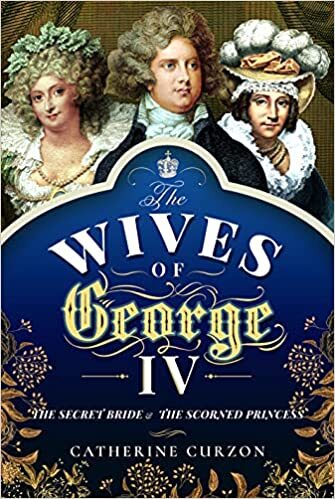
The Wives of George IV: The Secret Bride and the Scorned Princess
Hardcover – 30 November 2021 (UK) & 30 January 2022 (US)
In Georgian England, few men were more fashionable or more eligible than George, Prince of Wales. Wild, glamorous, and with a penchant for beautiful women, the heir to George III’s throne was a very good catch -or so it seemed. The two women who married him might beg to differ. Maria Fitzherbert was a twice-widowed Roman Catholic with a natural aversion to trouble. When she married the prince in a secret ceremony conducted in her Mayfair sitting room, she opened the door on three decades of heartbreak. Cast aside by her husband one minute, pursued tirelessly by him the next, Maria’s clandestine marriage was anything but blissful. It was also the worst kept secret in England. Caroline of Brunswick was George’s official bride. Little did she know that her husband was marrying for money and when she reached her new home in England, she found him so drunk that he couldn’t even walk to the altar. Caroline might not have her husband’s love, but the public adored her. In a world where radicalism was stirring, it was a recipe for disaster. In The Wives of George IV: The Secret Bride & the Scorned Princess, Maria and Caroline navigate the choppy waters of marriage to a capricious, womanising king-in-waiting. With a queen on trial for adultery and the succession itself in the balance, Britain had never seen scandal like it.

Joan, Lady of Wales: Power and Politics of King John’s Daughter
Paperback – 30 November 2021 (UK) & 30 January 2022 (US)
The history of women in medieval Wales before the English conquest of 1282 is one largely shrouded in mystery. For the Age of Princes, an era defined by ever-increased threats of foreign hegemony, internal dynastic strife and constant warfare, the comings and goings of women are little noted in sources. This misfortune touches even the most well-known royal woman of the time, Joan of England (d. 1237), the wife of Llywelyn the Great of Gwynedd, illegitimate daughter of King John and half-sister to Henry III. With evidence of her hand in thwarting a full scale English invasion of Wales to a notorious scandal that ended with the public execution of her supposed lover by her husband and her own imprisonment, Joan’s is a known, but little-told or understood story defined by family turmoil, divided loyalties and political intrigue. From the time her hand was promised in marriage as the result of the first Welsh-English alliance in 1201 to the end of her life, Joan’s place in the political wranglings between England and the Welsh kingdom of Gwynedd was a fundamental one. As the first woman to be designated Lady of Wales, her role as a political diplomat in early thirteenth-century Anglo-Welsh relations was instrumental. This first-ever account of Siwan, as she was known to the Welsh, interweaves the details of her life and relationships with a gendered re-assessment of Anglo-Welsh politics by highlighting her involvement in affairs, discussing events in which she may well have been involved but have gone unrecorded and her overall deployment of royal female agency.
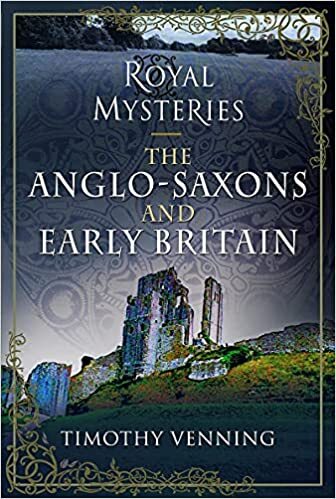
Royal Mysteries: The Anglo-Saxons and Early Britain
Hardcover – 30 April 2022 (UK) & 30 January 2022 (US)
Royal mysteries never fail to intrigue readers and TV viewers. The ‘mysteries’, unravelled and analysed, are of enduring fascination and full of tragedy, suffering and pathos but also heroism and romance. The text is based on deep research in original sources including rare documents, archaeological and DNA evidence, latest historiography and academic research but is essentially accessible history. These are the ‘Dark Ages’ but Anglo-Saxon enlightenment is emphasised. The Heptarchy, with seven Anglo-Saxon states is examined and Alfred’s victory over the Vikings and emergence of the English kingdom. But mystery surrounds all aspects of dynastic, political and military history. The story includes the surviving British and Welsh kingdoms when ‘Welsh’ meant ‘foreigner, the Gaelic kingdoms in what became Scotland, the survival of lowland ‘Britons’ under the Germanic Anglo-Saxon radar – a new interpretation of early English society in its shadowy forms with the half-mythical founders of the early English kingdoms like Hengist of Kent or Cerdic of Wessex, up to William duke of Normandy – did he have any legitimate claim to justify his ‘power-grab’? Some episodes have dropped out of history like the murder the teen-age King Edward the ‘Martyr’, but here is a re-telling of early mysteries based on close analysis of the myriad sources while stimulating romantic fascination.
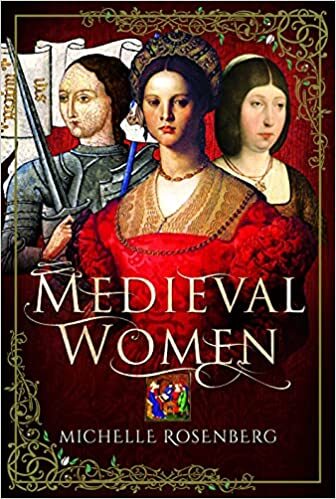
Medieval Women
Hardcover – 30 November 2021 (UK) & 30 January 2022 (US)
A jewel of a book, this latest release from one of Pen & Sword’s women historians, contains a treasure trove of medieval dramatis personae, from the more mainstream figures such as Lady Godiva and Joan of Arc to the lesser known Crusader Queens and mystics. For the first time together, we meet two elusive Jewish medieval business women, one of whom was imprisoned in the Tower of London and the other who was likely one of the richest women in the world. Meticulously researched and clearly showing the author’s keen eye for detail, this latest offering from Michelle Rosenberg builds on her reputation for bringing back to life women often forgotten from mainstream history. Relatively new figures include the elusive Virdimura of Sicily, and Julian of Norwich. The medieval period saw life expectancy at around 33 years old, with the vast majority of women unable to read or write. This text weaves together a rich and broad historic tapestry of women’s stories from the fall of the Roman Empire, the invasion of the Vikings, the First Crusade, Hundred Years War and Black Death. It offers an intriguing insight into medieval women whose lives were deemed outstanding enough, (whether through exemplary religious conduct, queenly, consort or intellectual accomplishment or scandal), by their contemporaries, to record. Their ability to endure, thrive and survive during a time when most women were subordinate to the men in their lives, makes them extraordinary; it also makes the loss of so many other missing stories so acute and tantalising for what our collective history has been deprived of. Only imagine what richness of tales we might have had, should more women’s lives have been better recorded for posterity.

The Tsarina’s Lost Treasure: Catherine the Great, a Golden Age Masterpiece, and a Legendary Shipwreck
Paperback – 11 January 2022 (US) & 17 February 2022 (UK)
On October 1771, a merchant ship out of Amsterdam, Vrouw Maria, crashed off the stormy Finnish coast, taking her historic cargo to the depths of the Baltic Sea. The vessel was delivering a dozen Dutch masterpiece paintings to Europe’s most voracious collector: Catherine the Great, Empress of Russia. Among the lost treasures was The Nursery, an oak-paneled triptych by Leiden fine painter Gerrit Dou, Rembrandt’s most brilliant student and Holland’s first international superstar artist. Dou’s triptych was long the most beloved and most coveted painting of the Dutch Golden Age, and its loss in the shipwreck was mourned throughout the art world.

A Scented Palace: The Secret History of Marie Antoinette’s Perfumer
Paperback – 11 January 2022 (US) & 11 November 2021 (UK)
Montpellier, 1748: Jean-Louis Fargeon is born into a family of perfumers and soon becomes apprentice to his father’s modest perfumery. But he dreams of the glittering court of Versailles and of becoming perfumer to the young queen, Marie Antoinette. His ambition carried him to Paris where his boutique became one of the most elegant and well-patronised in France. Concocting sumptuous perfumes and pomades for most of the French nobility, Fargeon eventually caught the attention of the queen. After meeting Marie Antoinette in the Trianon Palace, he began creating lavish bespoke scents that perfectly reflected her moods and personality.
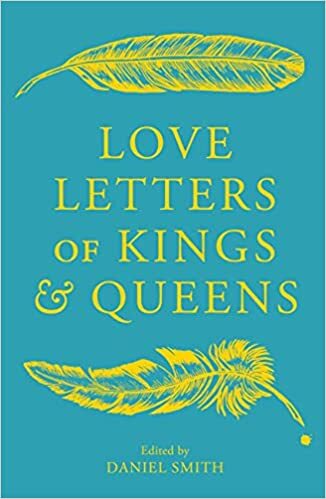
Love Letters of Kings and Queens
Hardcover – 18 January 2022 (US) & 4 February 2021 (UK)
Tender, moving, heartfelt and warm (and sporadically scandalous and outrageous too), these are the private messages between people in love. Yet they are also correspondence between the rulers of nations.

Maria Theresa: The Habsburg Empress in Her Time
Hardcover – 18 January 2022 (US) & 15 March 2022 (UK)
A major new biography of the iconic Austrian empress that challenges the many myths about her life and rule.

Elite Women as Diplomatic Agents in Italy and Hungary, 1470–1510: Kinship and the Aragonese Dynastic Network (Gender and Power in the Premodern World)
Hardcover – 31 January 2022 (US & UK)
This book explores the diplomatic role of women in early modern European dynastic networks through the study of Aragonese marriage alliances in late fifteenth-century Italy and Hungary. It challenges the frequent erasure of dynastic wives from diplomatic and political narratives to show how elite women were diplomatically active agents for two dynasties.
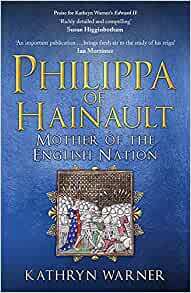
Philippa of Hainault: Mother of the English Nation
Paperback – 15 January 2022 (UK) & 15 April 2022 (US)
Philippa of Hainault: Mother of the English Nation is the first full-length biography of the queen at the centre of the some of the most dramatic events in English history. Philippa’s marriage to Edward III was arranged in order to provide ships and mercenaries for her mother-in-law to invade her father-in-law’s kingdom in 1326, yet it became one of the most successful royal marriages and endured for more than four decades. The chronicler Jean Froissart described her as, ‘The most gentle Queen, most liberal, and most courteous that ever was Queen in her days.’ Philippa stood by her husband’s side as he began a war against her uncle, Philip VI of France, and claimed his throne. She frequently accompanied him to France and Flanders during his early campaigns of the Hundred Years War. She also acted as regent in 1346 when Edward was away from his kingdom at the time of a Scottish invasion. She appeared on horseback to rally the English army to victory. Philippa became popular with the people due to her kindness and compassion. This popularity helped maintain peace in England throughout Edward’s reign. Her son, later known as the Black Prince ‒ the eldest of her thirteen children ‒ became one of the greatest warriors of the Middle Ages. Her extraordinary life did not escape tragedy: in 1348 three of her children died, almost certainly of the Black Death.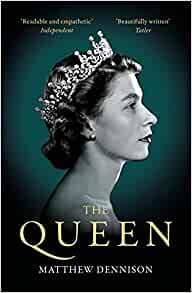
The Queen
Paperback – 6 January 2022 (UK)
For millions of people, both in Britain and across the world, Elizabeth II is the embodiment of monarchy. Her long life spans nearly a century of national and global history, from a time before the Great Depression to the era of Covid-19. Her reign embraces all but seven years of Britain’s postwar history; she has been served by fifteen UK prime ministers from Churchill to Johnson, and witnessed the administrations of thirteen US presidents from Truman to Trump. The vast majority of Britons cannot remember a world without Elizabeth II as head of state and the Commonwealth.
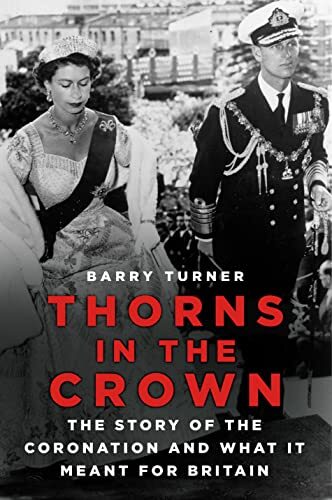
Thorns in the Crown: The Story of the Coronation and what it meant for Britain
Hardcover – 6 January 2022 (UK)
It is 1952 and Britain is changing. The Second World War is over, but the country is still scarred, recovering from six years of horror and still in the grip of food rationing. The British Empire is crumbling as countries fight for their independence both literally and physically. And George VI, the king who had refused to abandon London, is dead.
Thorns in the Crown is the story of a country on the precipice, divided between those who held firm to old values and traditions and those who were fighting for modernity and progression. Featuring memories and reflections of those who were part of the coronation, Barry Turner presents a unique look at Britain as it came to terms with the second Elizabethan age.

The Royal Gardens at Highgrove
Hardcover – 1 January 2022 (UK)
When Prince Charles first moved in to Highgrove, the gardens were a blank canvas and His Royal Highness an inexperienced gardener. Now, nearly 40 years later, through hard work and passion, not only has he become an accomplished gardener but the grounds of his Gloucestershire home have been transformed into one of the most remarkable gardens in Britain, delighting visitors from all around the world.
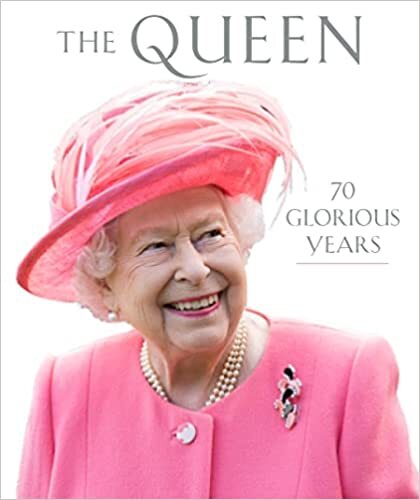
The Queen: 70 Glorious Years
Hardcover – 3 February 2022 (UK) & 15 January 2022 (US)
This official souvenir publication celebrates the Platinum Jubilee of Her Majesty Queen Elizabeth II, Britain’s longest-serving monarch.
In this special selection of photographs, captured by professional and amateur photographers alike, discover Her Majesty’s early life before she acceded to the throne in 1952, the official role of the monarch, her travel at home and abroad and her support for the Commonwealth, her fondness for animals and family life, and how she gives thanks to people who have given service to the monarch and their communities, from Garden Parties to the Order of the Garter. Photographs are accompanied by resonant quotations from speeches given by The Queen over the years – including her wartime Children’s Hour radio broadcast aged 14, her first Christmas Speech in 1952 and her speech welcoming President and Mrs Obama on the occasion of their State Visit in 2011.
Through 70 photographs from Her Majesty’s reign, this book takes readers on a photographic journey of a remarkable life of service.
The post Book News January 2022 appeared first on History of Royal Women.
December 16, 2021
Isabella of Parma – Exceeding expectations (Part two)
By the middle of 1759, Isabella’s marriage to Archduke Joseph of Austria, the future Joseph II, Holy Roman Emperor, the eldest son of Maria Theresa, was arranged. He had reportedly seen a painting of Isabella and had fallen head over heels in love and refused to marry anyone else. However, this may have been a story made up by his mother to appease the mother of the other candidate Maria Luisa of Spain (who ended up marrying Joseph’s brother Leopold). Louise Élisabeth had hoped for this marriage for nearly a decade, and now her dream would come true. Isabella’s mother was in Versailles at the time but did not rush back to prepare her daughter for marriage. Instead, she wrote to her husband, “This marriage is fortunate for us, but it’s not an honour. So let’s do it well, but without exaggerating.”1
Tragically, Louise Élisabeth did not live to see the wedding. In early December 1759, she fell ill with smallpox, and she was dead before her husband could even travel to Versailles. She had died on 6 December – still only 32 years old. She was buried at the Basicilia of St Denis with her twin sister, though their tombs would be desecrated during the French Revolution. When Isabella was told of her mother’s death, she fell to her knees and asked God to tell her how much longer she would live. A nearby clock chimed four times at that exact moment, and she assumed she had just four days left to live. When the fifth day arrived, she assumed it would be four weeks and then four months. Later, she believed she would not live to see her 22nd birthday.2 Isabella did not have much time to mourn as there was a wedding to plan, and Isabella intensified her German lessons.
During the preparations for the wedding, Isabella received the first letter from her future sister-in-law Maria Christina. She replied, “Madame, my dear sister, I received your letter with unspeakable joy. I am delighted by the friendship you show me, and I assure you, without the slightest exaggeration, that you can also be sure of mine.”3 At this point, neither woman probably realised how deep a bond they would form.
On 7 September 1760, the proxy ceremony took place in the Cathedral of Padua, where Josef Wenzel I, Prince of Liechtenstein, stood in for the groom. Isabella emerged from the cathedral as Archduchess of Austria and its future Empress. Her proxy groom glowingly wrote back to Vienna, “She has completely exceeded my expectations.”4 Not much later, Isabella left for Austria, and on 13 September, she arrived at Casalmaggiore, where the handover took place. Isabella received a letter from Empress Maria Theresa for the “happy arrival in my lands.”5 The journey continued, and on 30 September, Isabella met her father-in-law Francis Stephen, who had travelled to Stuppach to meet her, and they had dinner together. The following day, the bridal procession finally arrived at Laxenburg. Maria Theresa arrived with her son a few hours later, and Isabella finally met her new husband. It was quite a formal moment – he bowed while she curtseyed. Joseph was said to have fallen head over heels in love, but as the official wedding day approached, he said, “I am more afraid of marriage than of battle.”6
On 6 October, Isabella made her grand entry into the city for her official wedding to Joseph in the Augustinian Church. She had spent the last few days at the Belvedere, preparing for her wedding. The drive to the church took three hours, and Isabella’s carriage arrived around 5 o’clock. Joseph awaited his bride at the entrance and helped her out of the carriage. After the ceremony, the party went into the Hofburg palace for the wedding dinner. The festivities lasted for several more days, and Isabella quickly won the hearts of the family and of the people.
Isabella now settled into life as a member of the imperial family, and she and Maria Christina were instantly drawn to each other. Joseph told anyone who would listen that he was “unsurpassed in happiness” in his life, but Isabella was already falling into the hands of melancholy.7 When she became pregnant in the middle of 1761, it seemed to make things even worse. She told her parents-in-law, “Death speaks to me in a distinct voice that rouses in my soul a sweet satisfaction.”8 Isabella found Joseph very controlling and overbearing and often tried to escape his presence. She began to spend most of her time with Maria Christina and began to harbour romantic feelings for her, which also affected her already melancholic mood. During her pregnancy, she suffered from constant headaches, and she was watched closely by doctors. Finally, on 20 March 1762, at 7 o’clock in the evening, Isabella gave birth to a daughter who was named Maria Theresa, after her grandmother. She was baptised the following day with her grandparents Maria Theresa and Francis Stephen among her godparents. The delivery had been difficult for Isabella, and it took several weeks for her to recover.
Part three coming soon.
The post Isabella of Parma – Exceeding expectations (Part two) appeared first on History of Royal Women.
December 14, 2021
Isabella of Parma – The dignity of a Princess (Part one)
Isabella of Parma was born on 31 December 1741 as the daughter of Philip, Duke of Parma, the second son of King Philip V of Spain, and Louise Élisabeth of France. At the time of her birth, her father was not yet Duke of Parma, and she was born in the Buen Retiro Palace in Madrid. The delivery had been difficult for her 14-year-old mother, and it had lasted over 24 hours. Isabella was baptized immediately after birth, following the Spanish tradition.
Her father was involved in the War of the Austrian Succession at the time of her birth, and her mother was hopelessly lonely at the Spanish court with her domineering mother-in-law Elisabeth Farnese. Louise Élisabeth wrote to Philip, “As for me, I die of boredom and sadness, but the little one is fine.”1 When little Isabella was four years old, the Duke of Noailles described her as follows “One has never seen such a pretty child, she is very tall for her age, and her features are extremely pleasant. But above all, sire, it is her demeanour and dignity with which she receives her visitors. She already knows who she is, to whom she belongs and what she has to portray.”2 Quite impressive for a four-year-old girl!
In 1748, the War of the Austrian succession finally came to an end, and in the Treaty of Aix-la-Chapelle, the duchy was awarded to Isabella’s father, and he became the founder of the House of Bourbon-Parma. Louise Élisabeth did not hurry to be by her husband’s side in Parma, but she did leave Spain at the end of November – the destination was Versailles, and the 7-year-old Isabella was going with her. Although her new position as Duchess of Parma was pleasing, she needed to secure an income from her father. She was touchingly reunited with her father, her mother, her brother the Dauphin and her twin sister Henriette. While in France, she worked diligently to establish an income to provide for them in wartorn Parma, and she was already on the lookout for a suitable match for her daughter. Her stay at Versailles was extended week after week.
Little Isabella is not spoken of much during this time. She later described herself as a tomboy who enjoyed jumping and climbing. She often broke stuff and chatted away as soon as she learned to speak. She was undoubtedly a spirited young girl, and she was much beloved by her French family. After nearly a year at Versailles, their departure for Parma could not be postponed any longer. On 6 October 1749, the Duchess of Parma and her daughter Isabella departed from Fontainebleau. On 1 November, they finally sailed from Antibes, but a storm forced them to take shelter in Monaco. When Genoa finally came into view, another storm proved so strong that they could not land, and they were forced to endure another rocky day at sea. When they finally arrived on land, they received a splendid reception. The in-land journey also proved difficult due to flooding, but they finally reached Broni on 17 November, where a surprise waited for them – Philip had come to fetch them.
Unfortunately, there is no record of this meeting. Philip had last seen his young daughter as a toddler, and she was now almost eight years old. Louise Élisabeth had little interest in Parma and mockingly called it “ce trou” (this hole). They moved into the Ducal Palace of Colorno, and Louise Élisabeth immediately hired craftsmen to make it more French. Louise Élisabeth reportedly wrote so often to her father to ask for more money that he had wondered out loud if it would not be cheaper to recall her to France.3
The Marquesa de Gonzales was appointed as Isabella’s governess, but her mother was not pleased with this appointment as she believed that the Marquesa was an informant for the Spanish court, which turned out to be true. There was soon another addition to the family – Louise Élisabeth gave birth to a son named Ferdinand on 20 January 1751, followed by a second daughter by the name of Maria Luisa on 9 December 1751. The following year, Louise Élisabeth left her children behind as she went back to Versailles to mourn the death of her twin sister Henriette. She would stay there for almost an entire year. Isabella’s father had accompanied his wife part of the way there, and from this time, there are some surviving letters from Isabella to her father. One of the letters reads, “Papa, I am delighted with Maman’s happy arrival, I wish she had already arrived in Versailles and even more back in Parma. Papa, I’m telling you my brother is fine, including his teeth, but he has a bit of a foot ache. My dear papa, your very obedient daughter.”4
Isabella continued in her education – she learned history, geography and several languages. She loved to play and perform music, and she also learned to use a bow and arrow. She even knew the basics of cooking. Isabella also raised silkworms in a hidden garden bed and learned to draw and paint with pastels.
Part two coming soon.
The post Isabella of Parma – The dignity of a Princess (Part one) appeared first on History of Royal Women.
December 13, 2021
The Duchess of Windsor and the Kents (Part two)
When it finally came to planning a wedding, Edward assumed that at least some of his family would attend. A date was arranged by Louis Mountbatten, who later wrote, “I succeeded in fixing a date for your wedding that suited Bertie, George, etc.” But then “other people stepped in.”1 In the end, no member of the royal family would be present as it would have looked they were “accepting the future Duchess for all purposes into the Royal Family.”2 The Duke of Kent wrote to Edward, “You have always been a wonderful friend to me, and you know (I hope) my great affection and regard for you, and I am very sincerely sad at not being with you on June 3.”3 The Kents’ wedding present of a Fabergé box was returned and Edward wrote, “The only boxes I happen to be collecting now are those that can be delivered on the ears.”4 When the Kents sent a cable of congratulations, Edward was equally angry. Though he did not doubt the sincerity of their good wishes, he wrote that they were “not at all in tune with the attitude of the rest of the family.” Nor had they shown any inclination towards following a different line than the rest of the family. Edward added, “I tell you, here and now, that I will never forgive or forget the lead Bertie has given you all in your behaviour to me since I left England.”5
The Duke and Duchess of Kent were staying with Prince Paul of Yugoslavia in Brdo in the autumn of 1937, while the Duke and Duchess of Windsor were just a few hours away on their honeymoon in Wasserleonburg. The Duke of Kent wrote to his brother how much he wanted to visit him for a night or two, but when they later spoke on the telephone, it was clear that Marina had been instructed not to come by Queen Mary.6 Edward told his brother that they could both come or neither was welcome. The Duke of Kent went back to the new King, who told him to go even if he had to take Marina with him. Marina remained reluctant to go, and eventually, Queen Elizabeth and Queen Mary convinced the King to change his mind. Edward wrote angrily to his mother, “I, unfortunately, know from George that you and Elizabeth instigated the somewhat sordid and much-publicized episode of the failure of the Kents to visit us… I am at a loss to know how to write to you, and further to see how any form of correspondence can give pleasure under these circumstances… It is a great sorrow and disappointment to me to have my mother thus cast out her eldest son.”7
On 25 August 1942, Prince George was killed in a flying accident. Edward, who was in the Bahamas at the time, received a letter from Queen Mary which read, “My thoughts go out to you, who are so far away from us all, knowing how devoted you were to him, and how kind you were to him in a difficult moment in his all too short life, kindness I for one shall never forget; he always remembered it, for he was very fond of you. I hope you will often write to me now, as you used to do.” Then she added, “Please give a kind message to your wife, she will help you bear your sorrow.”8 Edward replied warmly to his mother and also indicated that he had written to Marina. However, Marina never received this letter and believed she had been deliberately snubbed.
If there had been any hope that the Duke of Kent’s death would bring the family closer together, it was idle hope. It wasn’t until Edward was in London for surgery in 1965 that Marina visited the Duke and Duchess of Windsor. Wallis curtsied as Marina entered, but Marina embraced her instead. Wallis and Marina had not seen each other face to face since the abdication. They spent an hour together, and Wallis later said, “It was one of the most touching moments. It meant so much to David because George had meant so much to him.”9 Marina promised that she would have her children visit their aunt and uncle regularly, and she stayed true to her word.
Princess Marina died on 27 August 1968 at the age of 61, and Edward attended her funeral. According to one account, Wallis deliberately stayed away for the sake of everyone’s grief.10
The post The Duchess of Windsor and the Kents (Part two) appeared first on History of Royal Women.
December 12, 2021
The Duchess of Windsor and the Kents (Part one)
Besides her future husband, it was probably Prince George, Duke of Kent and later also his wife Princess Marina, who had the most contact with Wallis, as members of the royal family.
Prince George was King George V’s fourth son, and he first met Wallis in 1931 at the same time his brother did – on 10 January 1931. Like the Prince of Wales, Wallis got to know George as well, as he was part of the same social circles as his brother. Both Wallis and Ernest were invited to George’s wedding to Princess Marina of Greece and Denmark. Prince George lived at Fort Belvedere as he prepared for his wedding, and so Wallis saw quite a lot of him during this time and even went to the theatre with him. Wallis sarcastically wrote to her aunt, “I do well with the Windsor lads.”1
Two days before the wedding, a reception took place at Buckingham Palace, to which Wallis and Ernest were also invited. King George and Queen Mary were by now well aware of their son’s interest in Wallis, and it was reportedly on this occasion that they ordered her name to be crossed off the guest list. The Prince of Wales reportedly told his parents that “if he were not allowed to invite these friends of his, he would not go to the ball. He pointed out that the Simpsons were remarkably nice Americans, that it was important England and America be on cordial terms, and that he himself had been most kindly entertained in the States. His parents gave way, and the Simpsons duly came to the ball.”2
For the ball, Ernest wore black knee-breeches, and Wallis wore a violet lamé dress with a green sash and also borrowed a tiara from Cartier for the occasion. Wallis wrote, “We took our places in the line of guests that by custom forms on either side of the reception rooms on the approach of the Sovereign and his Consort. As they proceeded with great dignity down the room, members of the Royal party followed in their wake, stopping now and then to speak with friends. The Prince of Wales brought Prince Paul, Regent of Yugoslavia and also brother-in-law of the bride, over to talk with us. ‘Mrs Simpson,’ said Prince Paul, ‘there is no question about it – you are wearing the most striking gown in the room.’ [..] The reception was rendered truly memorable for me the reason that it was the only time I ever met David’s father and mother.3 After Prince Paul had left us, David led me over to where they were standing and introduced me. It was the briefest of encounters – a few words of perfunctory greeting, an exchange of meaningless pleasantries, and we moved away. But I was impressed by Their Majesties great gift for making everyone they met, however casually, feel at ease in their presence.”4
Two days later, the royal wedding took place at Westminster Abbey, and Wallis thought the ceremony had been very solemn and moving. They had been seated on a side aisle from which they had a clear view of the altar. Wallis later wrote, “It seemed unbelievable that I, Wallis Warfield of Baltimore, Maryland, could be part of this enchanted world. It seemed so incredible that it produced in me a dreamy state of happy and unheeding acceptance.”5
Wallis came to frequently see George and Marina, as opposed to other members of the Prince of Wales’s family. Even after Edward became King, he and Wallis often visited the Kents in London and at their country house, Coppins. Nevertheless, it was said that Marina remained reluctant to meet Wallis.6 On 10 December 1936, the Duke of Kent was present when his brother signed the abdication papers, and he also signed as a witness. Edward was to travel to Austria, where he would spend the final months waiting out Wallis’s divorce decree. The first member of his family to visit him in his exile was his sister Mary, Princess Royal, and her husband. They visited in early February, and the Duke of Kent followed three weeks later.
The post The Duchess of Windsor and the Kents (Part one) appeared first on History of Royal Women.
The Year of the Duchess of Windsor – Wallis and the Kents (Part one)
Besides her future husband, it was probably Prince George, Duke of Kent and later also his wife Princess Marina, who had the most contact with Wallis, as members of the royal family.
Prince George was King George V’s fourth son, and he first met Wallis in 1931 at the same time his brother did – on 10 January 1931. Like the Prince of Wales, Wallis got to know George as well, as he was part of the same social circles as his brother. Both Wallis and Ernest were invited to George’s wedding to Princess Marina of Greece and Denmark. Prince George lived at Fort Belvedere as he prepared for his wedding, and so Wallis saw quite a lot of him during this time and even went to the theatre with him. Wallis sarcastically wrote to her aunt, “I do well with the Windsor lads.”1
Two days before the wedding, a reception took place at Buckingham Palace, to which Wallis and Ernest were also invited. King George and Queen Mary were by now well aware of their son’s interest in Wallis, and it was reportedly on this occasion that they ordered her name to be crossed off the guest list. The Prince of Wales reportedly told his parents that “if he were not allowed to invite these friends of his, he would not go to the ball. He pointed out that the Simpsons were remarkably nice Americans, that it was important England and America be on cordial terms, and that he himself had been most kindly entertained in the States. His parents gave way, and the Simpsons duly came to the ball.”2
For the ball, Ernest wore black knee-breeches, and Wallis wore a violet lamé dress with a green sash and also borrowed a tiara from Cartier for the occasion. Wallis wrote, “We took our places in the line of guests that by custom forms on either side of the reception rooms on the approach of the Sovereign and his Consort. As they proceeded with great dignity down the room, members of the Royal party followed in their wake, stopping now and then to speak with friends. The Prince of Wales brought Prince Paul, Regent of Yugoslavia and also brother-in-law of the bride, over to talk with us. ‘Mrs Simpson,’ said Prince Paul, ‘there is no question about it – you are wearing the most striking gown in the room.’ [..] The reception was rendered truly memorable for me the reason that it was the only time I ever met David’s father and mother.3 After Prince Paul had left us, David led me over to where they were standing and introduced me. It was the briefest of encounters – a few words of perfunctory greeting, an exchange of meaningless pleasantries, and we moved away. But I was impressed by Their Majesties great gift for making everyone they met, however casually, feel at ease in their presence.”4
Two days later, the royal wedding took place at Westminster Abbey, and Wallis thought the ceremony had been very solemn and moving. They had been seated on a side aisle from which they had a clear view of the altar. Wallis later wrote, “It seemed unbelievable that I, Wallis Warfield of Baltimore, Maryland, could be part of this enchanted world. It seemed so incredible that it produced in me a dreamy state of happy and unheeding acceptance.”5
Wallis came to frequently see George and Marina, as opposed to other members of the Prince of Wales’s family. Even after Edward became King, he and Wallis often visited the Kents in London and at their country house, Coppins. Nevertheless, it was said that Marina remained reluctant to meet Wallis.6 On 10 December 1936, the Duke of Kent was present when his brother signed the abdication papers, and he also signed as a witness. Edward was to travel to Austria, where he would spend the final months waiting out Wallis’s divorce decree. The first member of his family to visit him in his exile was his sister Mary, Princess Royal, and her husband. They visited in early February, and the Duke of Kent followed three weeks later.
Part two coming soon.
The post The Year of the Duchess of Windsor – Wallis and the Kents (Part one) appeared first on History of Royal Women.
December 11, 2021
“My heart is so full of love for you…”
On 12 December 1936, the former King Edward VIII was on his way to his place of exile – Schloss Enzesfeld in Austria. There was technically no requirement for them to stay apart while Wallis’s divorce was not yet final, but they wanted to avoid having the decree contested at all cost. Unfortunately, this meant that they had to stay apart until May the following year.
As he travelled to Austria, Wallis wrote a heartfelt letter to him.
“Darling,
My heart is so full of love for you and the agony of not being able to see you after you have been through is pathetic. At the moment we have the whole world against us and our love – so we can’t afford to move about very much and must simply sit and face these dreary months ahead and I think I shall have to stay here. It may be safer than moving and a house is more protection than a hotel from the press and the fanatics. I am thinking where is the best place for you because you must have people with you always. The Hunters would come out also Perry & Kitty, the Buists etc. A man called Bedaux – Americans – have (sic) have offered their place to you. It is near Tours. The Rogers say it is lovely. Perhaps it is too near here. Then I hear Ralph Grimthorpe has offered you his house at Sorrento Italy. I also hear that Lincoln Ellsworth has a lovely house in Switzerland which you could probably get – and in my opinion Mimizan is safe. I don’t think you will be happy long at Enzesfeld and besides you couldn’t stay forever. I think after Christmas is the limit.
Anyway we will find something for you my darling and I am feeling all your feelings of loneliness and despair which must face you on this beginning. If we could have been together during the waiting it would have been so much easier. I long for you so. I hear that there is an organization of women who have sworn to kill me. Evans is investigating. We must not take any risks because to have an accident now would be too much to bear – so please be a “sissy” about protection. I am. There is nothing I can begin to say about Perry’s friendship for us. It has been absolutely marvellous in every way. Do tell him. I can’t because I begin to cry, I have never seen anything like it.
I don’t know your name but rather hoped it would be The Prince (sic) of Windsor. I suppose we will have difficulty about a name for poor me as York I don’t suppose will make me HRH. Above all we want to have a dignified position no matter where we are. That is also important to the throne.
Your broadcast was very good my angels and it is all going to be so lovely. Make ooh! It is cruel the laws are such that we can’t see each other until April. However everything must be done to try and placate the legal side. I can’t believe the Government would want more scandal and everything raked up again at the time of the Coronation. Some of the papers – Times, Telegraph, Morning Post – have been disloyal to you and foul to me. However it is all over now. I hope you will never regret this sacrifice and that your brother will prove to the world that we still have a position and that you will be given some jobs to do.
I am sending Ladbrook home as he wants to go but he will come out to you anywhere and you must have a car. I am engaging a local chauffeur. I think the detectives hate the job but I must have them and if the Home Office withdraws them I shall have to have two out and pay them. Monckton or Allen could select them and I shall pay out of the savings account. It is worth it God knows with all these threatening letters. I love you David and am holding so tight.”1
The post “My heart is so full of love for you…” appeared first on History of Royal Women.
The mysterious creation of the Dukedom of Windsor
Upon King Edward VIII’s abdication, he immediately became a Prince of the United Kingdom of Great Britain and Ireland with the qualification of Royal Highness. On 5 February 1864, Queen Victoria had issued Letters Patent saying, “that besides the Children of Sovereigns of these Realms, the Children of the Sons of any Sovereign of Great Britain and Ireland shall have and at all times hold and enjoy the title, style and attribute of “Royal Highness,” with their titular dignity of Prince or Princess prefixed to their representative Christian names.”1 Queen Victoria’s Letters Patent were later confirmed by King George V in 1917.2 King George VI had even – inadvertently – recognised his brother’s royal rank immediately after his abdication by instructing Sir John Reith to introduce him as His Royal Highness Prince Edward before his speech to the nation.
King George VI informed his brother he would create him a royal duke, and they settled on the name Duke of Windsor. A royal duke could not sit and vote in the House of Lords, and this is exactly what the new King wanted. On 12 December 1936, King George VI read out a declaration at his Accession Council which stated, “My first act upon succeeding my brother will be to confer on him a Dukedom & he will henceforth be known as HRH The Duke of Windsor.”3 This declaration was published in the Gazette that same day.4
The actual creation of the Dukedom of Windsor did not take place until 8 March 19375, but this was not published in the Gazette.6 For example, when Edward’s brother was created Duke of Kent in 1934, the following was published in the Gazette: “The KING has been pleased to direct Letters Patent to be passed under the Great Seal of the Realm granting unto His Majesty’s Son, His Royal Highness Prince George Edward Alexander Edmund, K.G., G.C.M.G., G.C.V.O., and the heirs male of his body lawfully begotten the dignities of Baron Downpatrick, Earl of St. Andrews, and Duke of Kent.7 So, why wasn’t the Windsor Dukedom gazetted? We assume that the dukedom came with the standard “heirs male of his body,” but we cannot say this for sure. The National Archives have items relating to the Duke of Windsor title, though some have been extracted from the main piece because it is subject to extended closure under section 5(1) of the Public Records Act, 1958.8 Could this be the original Letters Patent? And if so, why are they being hidden?
On 27 May 1937, another letters patent was issued to confer the style of HRH to the Duke of Windsor and to exclude his wife and any possible descendants from holding the style of HRH. See this article for a further discussion on why this was illegal. These letters patent were published in the Gazette.9
In any case, the Windsor dukedom went extinct in 1972 upon Edward’s death. Though it is said that the title cannot be used again, this is nonsense as nothing is stopping the sovereign from creating the title again. Whether it is a good idea for it to be revived is a whole other matter!
The post The mysterious creation of the Dukedom of Windsor appeared first on History of Royal Women.
The Year of the Duchess of Windsor – “My heart is so full of love for you…”
On 12 December 1936, the former King Edward VIII was on his way to his place of exile – Schloss Enzesfeld in Austria. There was technically no requirement for them to stay apart while Wallis’s divorce was not yet final, but they wanted to avoid having the decree contested at all cost. Unfortunately, this meant that they had to stay apart until May the following year.
As he travelled to Austria, Wallis wrote a heartfelt letter to him.
“Darling,
My heart is so full of love for you and the agony of not being able to see you after you have been through is pathetic. At the moment we have the whole world against us and our love – so we can’t afford to move about very much and must simply sit and face these dreary months ahead and I think I shall have to stay here. It may be safer than moving and a house is more protection than a hotel from the press and the fanatics. I am thinking where is the best place for you because you must have people with you always. The Hunters would come out also Perry & Kitty, the Buists etc. A man called Bedaux – Americans – have (sic) have offered their place to you. It is near Tours. The Rogers say it is lovely. Perhaps it is too near here. Then I hear Ralph Grimthorpe has offered you his house at Sorrento Italy. I also hear that Lincoln Ellsworth has a lovely house in Switzerland which you could probably get – and in my opinion Mimizan is safe. I don’t think you will be happy long at Enzesfeld and besides you couldn’t stay forever. I think after Christmas is the limit.
Anyway we will find something for you my darling and I am feeling all your feelings of loneliness and despair which must face you on this beginning. If we could have been together during the waiting it would have been so much easier. I long for you so. I hear that there is an organization of women who have sworn to kill me. Evans is investigating. We must not take any risks because to have an accident now would be too much to bear – so please be a “sissy” about protection. I am. There is nothing I can begin to say about Perry’s friendship for us. It has been absolutely marvellous in every way. Do tell him. I can’t because I begin to cry, I have never seen anything like it.
I don’t know your name but rather hoped it would be The Prince (sic) of Windsor. I suppose we will have difficulty about a name for poor me as York I don’t suppose will make me HRH. Above all we want to have a dignified position no matter where we are. That is also important to the throne.
Your broadcast was very good my angels and it is all going to be so lovely. Make ooh! It is cruel the laws are such that we can’t see each other until April. However everything must be done to try and placate the legal side. I can’t believe the Government would want more scandal and everything raked up again at the time of the Coronation. Some of the papers – Times, Telegraph, Morning Post – have been disloyal to you and foul to me. However it is all over now. I hope you will never regret this sacrifice and that your brother will prove to the world that we still have a position and that you will be given some jobs to do.
I am sending Ladbrook home as he wants to go but he will come out to you anywhere and you must have a car. I am engaging a local chauffeur. I think the detectives hate the job but I must have them and if the Home Office withdraws them I shall have to have two out and pay them. Monckton or Allen could select them and I shall pay out of the savings account. It is worth it God knows with all these threatening letters. I love you David and am holding so tight.”1
The post The Year of the Duchess of Windsor – “My heart is so full of love for you…” appeared first on History of Royal Women.
The Year of the Duchess of Windsor – The mysterious creation of the Dukedom of Windsor
Upon King Edward VIII’s abdication, he immediately became a Prince of the United Kingdom of Great Britain and Ireland with the qualification of Royal Highness. On 5 February 1864, Queen Victoria had issued Letters Patent saying, “that besides the Children of Sovereigns of these Realms, the Children of the Sons of any Sovereign of Great Britain and Ireland shall have and at all times hold and enjoy the title, style and attribute of “Royal Highness,” with their titular dignity of Prince or Princess prefixed to their representative Christian names.”1 Queen Victoria’s Letters Patent were later confirmed by King George V in 1917.2 King George VI had even – inadvertently – recognised his brother’s royal rank immediately after his abdication by instructing Sir John Reith to introduce him as His Royal Highness Prince Edward before his speech to the nation.
King George VI informed his brother he would create him a royal duke, and they settled on the name Duke of Windsor. A royal duke could not sit and vote in the House of Lords, and this is exactly what the new King wanted. On 12 December 1936, King George VI read out a declaration at his Accession Council which stated, “My first act upon succeeding my brother will be to confer on him a Dukedom & he will henceforth be known as HRH The Duke of Windsor.”3 This declaration was published in the Gazette that same day.4
The actual creation of the Dukedom of Windsor did not take place until 8 March 19375, but this was not published in the Gazette.6 For example, when Edward’s brother was created Duke of Kent in 1934, the following was published in the Gazette: “The KING has been pleased to direct Letters Patent to be passed under the Great Seal of the Realm granting unto His Majesty’s Son, His Royal Highness Prince George Edward Alexander Edmund, K.G., G.C.M.G., G.C.V.O., and the heirs male of his body lawfully begotten the dignities of Baron Downpatrick, Earl of St. Andrews, and Duke of Kent.7 So, why wasn’t the Windsor Dukedom gazetted? We assume that the dukedom came with the standard “heirs male of his body,” but we cannot say this for sure. The National Archives have items relating to the Duke of Windsor title, though some have been extracted from the main piece because it is subject to extended closure under section 5(1) of the Public Records Act, 1958.8 Could this be the original Letters Patent? And if so, why are they being hidden?
On 27 May 1937, another letters patent was issued to confer the style of HRH to the Duke of Windsor and to exclude his wife and any possible descendants from holding the style of HRH. See this article for a further discussion on why this was illegal. These letters patent were published in the Gazette.9
In any case, the Windsor dukedom went extinct in 1972 upon Edward’s death. Though it is said that the title cannot be used again, this is nonsense as nothing is stopping the sovereign from creating the title again. Whether it is a good idea for it to be revived is a whole other matter!
The post The Year of the Duchess of Windsor – The mysterious creation of the Dukedom of Windsor appeared first on History of Royal Women.



